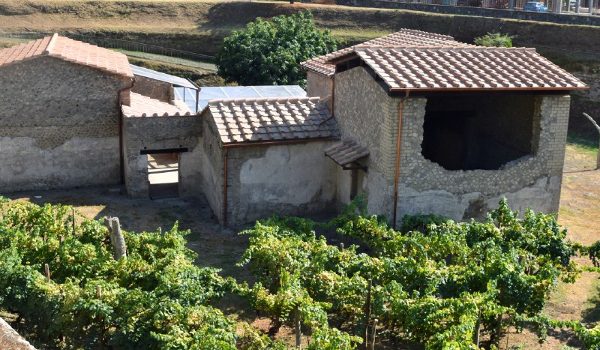Villa Regina at Boscoreale reopens to the public after the completion of restoration works
Villa Regina at Boscoreale reopens to the public, following the completion of stabilisation and restoration interventions.
Villa Regina is the only villa rustica that can be visited in its entirety, among the numerous farms specialised in agricultural production which are present in Pompeii area. It was discovered in 1977 following construction works, and then brought to light by focused excavation campaigns which were completed in 1980.
It is composed of a series of rooms which are arranged along the three sides of an open courtyard, which housed the cella vinaria, with eighteen dolia (jars used for storing wine). The primary trade of the villa was indeed the production of wine.
In the villa some casts of the window and door frames are still preserved. In addition to the large portico, the torcularium with casts of the wooden press and the holes and small shafts for anchoring it to the ground, the pressing tank and the container for the collection of must, the more refined rooms of the Villa include the triclinium, with its painted wall decoration dated to a transition phase between the Third and Fourth Styles; the kitchen, which was no longer in use at the time of the eruption, with a brick oven and hearth at the centre of the room, a service compartment with a water cistern, and a granary for storing hay, cereals and legumes, adjacent to the open-air threshing floor.
The original layout of the villa, which also featured an upper floor, can be dated to the 1st century BC, and was enlarged in at least two later phases during the Augustan and Julio-Claudian eras. During excavation, clear traces were discovered of grooves left by the wheels of a transport cart (plaustrum) in the earth of a small street adjacent to the villa.
The ground level of the area surrounding the villa consists of the agricultural land of AD 79, which preserves traces of ancient crops, casts of the vine roots of which have been made. Vines which serve as a demonstrative reconstruction of the vineyard planting have been replanted next to them.
Along the walls of the excavation, the stratigraphy of the soil clearly shows the succession of pyroclastic material deposits left by the eruption of AD 79, which caused the destruction of the small farm.


